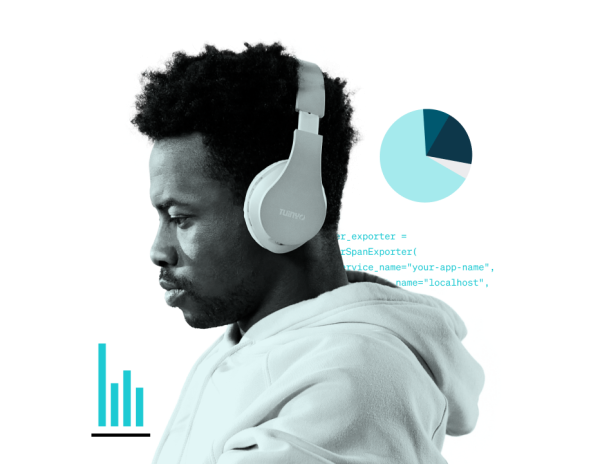experienced pricing or billing issues with an observability vendor
said rapid data growth significantly impacted their observability bill
anticipated higher operation costs without observability
cited cost as a challenge to achieving full-stack observability
noted too many tools is a barrier to achieving full-stack observability
Challenges preventing full-stack observability
So if full-stack observability provides so many advantages, what’s preventing organizations from achieving it? We found that:
- About a quarter cited it as being too expensive (26%—which is 15% more than last year), lack of budget (25%), and too many monitoring tools (25%).
- There was a 30% increase in the number of respondents who claim to have already achieved full-stack observability (from 2.7% in 2022 to 3.5% in 2023).
- All other challenges decreased year-over-year (YoY), most notably 47% fewer who cited a lengthy sales cycle, 39% fewer who said their IT performance is adequate, and 35% fewer who don’t see the value in prioritizing right now.
In addition, of those who said that their IT performance is adequate (no need to improve current performance), 57% said that they spend $500,000 or more on observability per year.
said cost is a barrier to achieving full-stack observability
Role insight
Non-executive managers were more likely to cite a lack of budget (34%) than executives (22%) and practitioners (25%).
Organization size insight
Small and midsize organizations saw cost and lack of budget and personnel as bigger barriers to full-stack observability, while large organizations struggled more with too many monitoring tools and siloed data.
It’s challenging that observability is so expensive. That often becomes a barrier. Whether you’re really small or you have a whole lot of money, cost really gets prohibitive once you get above a certain threshold.
Pricing- and billing-related observability issues
Since cost is so often cited as a barrier to observability, we looked at what pricing- and billing-related issues organizations have experienced with their observability vendor(s) in the past year. We found that:
- Two in five (40%) said rapid data growth significantly impacted their observability bill.
- About a third had to pay for the whole month or year at their peak usage level (33%) and/or pay for unwanted bundles to get the observability capabilities they need (32%).
- Three in 10 (30%) dealt with frequent re-forecasting and re-contracting for multiple SKUs
- Nearly a quarter (23%) experienced unbudgeted monthly overage fees and penalties.
- Just 15% indicated no pricing- or billing-related issues with their observability vendor(s).
Notably, at least 80% of respondents experienced pricing or billing issues with an observability vendor in 2022.
said rapid data growth significantly impacted their observability bill
Regional insight
Generally, Asia Pacific was more likely to experience pricing- and billing-related issues than Europe or North America.
Organization size insight
Generally, large organizations were the most likely to experience pricing- and billing-related issues, followed by midsize and then small organizations.
Business outcomes without observability
We were interested in what would be the most significant business outcome if an organization did not have an observability solution.
Survey respondents indicated that higher operation costs due to increased operational effort would be the most significant business outcome (29%), followed by revenue loss due to increased downtime (23%). These were also the most concrete financial impacts—higher costs and lost revenue—while other reasons were about reputation loss (17%), reduced team velocity (14%), and competitive disadvantage (12%). Just 3% said not having an observability solution would not affect business outcomes.
So, 96% indicated that they would experience a significant business outcome if their organization didn’t have an observability solution.
anticipated higher operation costs without observability
Industry insight
Those from the government were the most likely to say not having an observability solution would result in higher operation costs due to increased operational effort (40%), followed by retail/consumer (34%).

